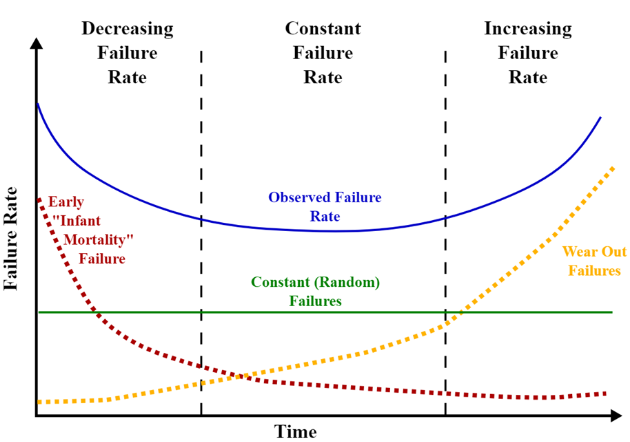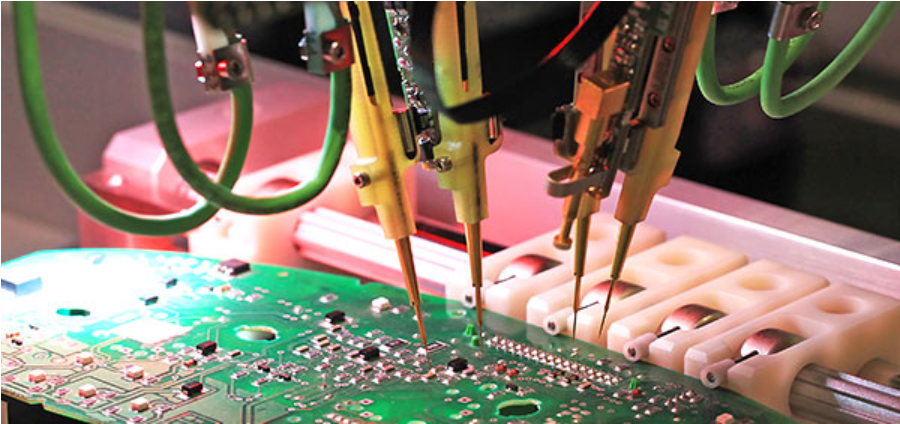The Cost and Risk Benefits of Burn-In Testing for Electronics
Testing and inspection are vital parts of electronics contract manufacturing, for obvious reasons. Before that shipment of PCBs arrives on your...

Without a doubt, the development of enhanced inspection equipment has been critical to the PCB assembly industry. The speed and precision of Automated Optical Inspection (AOI) and Automated X-Ray Inspection (AXI) techniques have allowed PCB manufacturers to keep in demand with the increasing complexity of today’s electronics.
In today’s marketplace, higher quantities, increased complexity and the demand for competitive pricing has created a need for fast and accurate inspection by the electronic contract manufacturer. Manual inspection can no longer single-handedly do the trick.
By placing an automated inspection machine directly ‘in-line’ during the SMT process, critical errors can be detected earlier, saving time and money along the way.
Both types of inspection equipment are versatile and can be utilized at several distinct stages of the assembly process. Placing the inspection machines closest to the fault source is most effective and ensures quick detection of faulty boards.
Typically, most inspection machines are placed before or after the solder process. There are benefits to both locations, but post-solder is optimal as all solder joints can be tested for defects like lifted leads, insufficient joints and tombstoning.
The AOI method uses one (2D) or two (3D) cameras and a light source to take precise photographs of the board and compares them to a detailed schematic. If the two don’t match up to a certain degree, the board is flagged and examined manually by an associate.
3D inspection machines use dual cameras to develop a three-dimensional image of the board, measuring true profilometric shapes, joints and patterns.
This technology can verify 01005’s and other miniscule components used on the market.
AXI technology is based on similar principles to AOI but carries the immensely beneficial ability to inspect elements typically hidden from view.
Instead of using light, x-rays are used to inspect things unseen to AOI, like array packages with solder joints located underneath the chip package. This ability makes AXI the premium choice for inspection of complicated boards with BGA’s and RF shielding.
As with AOI, X Ray inspection comes in two forms. 2D, or transmission inspection, is like 2D AOI in that it creates a digital image that’s then compared to a schematic. 3D AXI produces images of each individual board layer of multi-layer boards, allowing them to be inspected in one pass-through.
Another important function of inspection equipment is data collection and process feedback. As the machines process boards, data is pooled and, in some cases, transmitted to a database through a factory’s network. These machines also can ‘communicate’ with one another, sharing data and programs to combat defects to a more effective degree.
Basically, it means the use of quality inspection equipment simplifies both yourself and your ECM’s lives. If your ECM has invested in superior AOI and AXI equipment, it goes a long way towards healthy on-time delivery, product quality and assurance that it can properly assess faults when it comes to smaller and more complex components. That’s great for you. For the Electronic Contract Manufacturer, what’s great for you is great for them, and the ability to consistently deliver a reliable product to their customers is great for their business and reputation.

Testing and inspection are vital parts of electronics contract manufacturing, for obvious reasons. Before that shipment of PCBs arrives on your...

Electronic contract manufacturers (ECMs) regularly tout the certifications they possess -- just take a look at their websites. Hey, even we do it....

Deciding on the best testing method for your printed circuit board can be a daunting task. There are plenty of factors to take into consideration,...